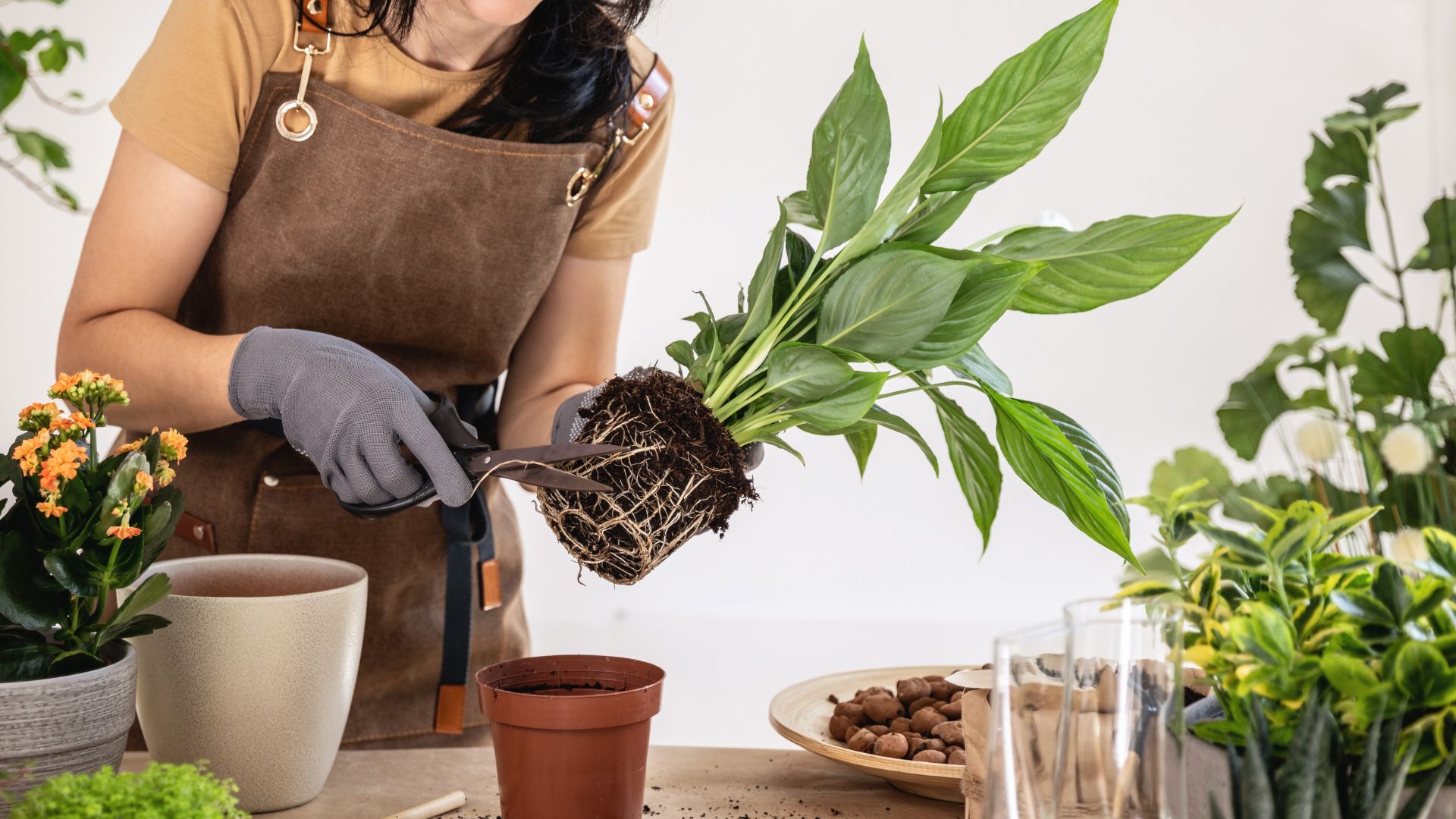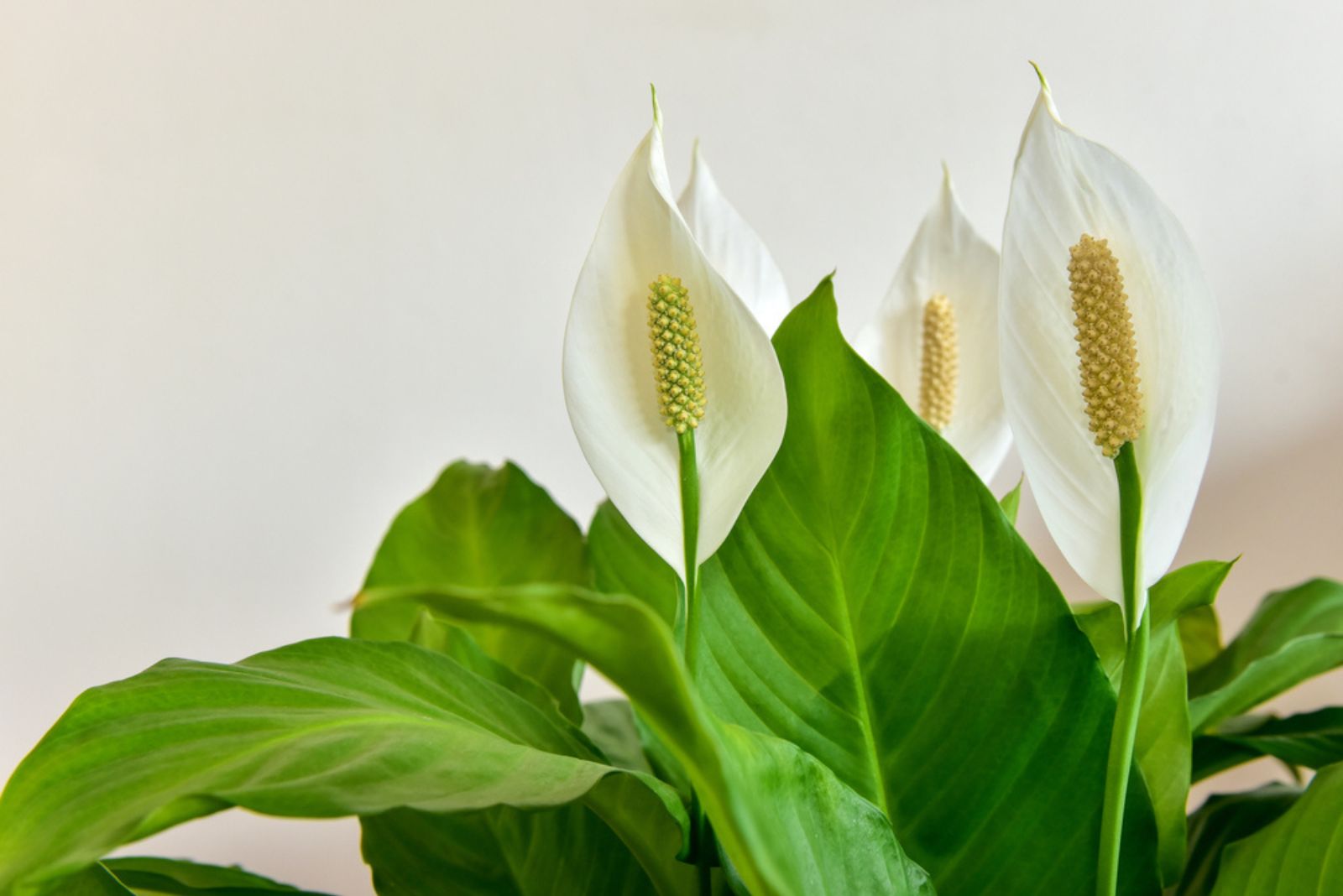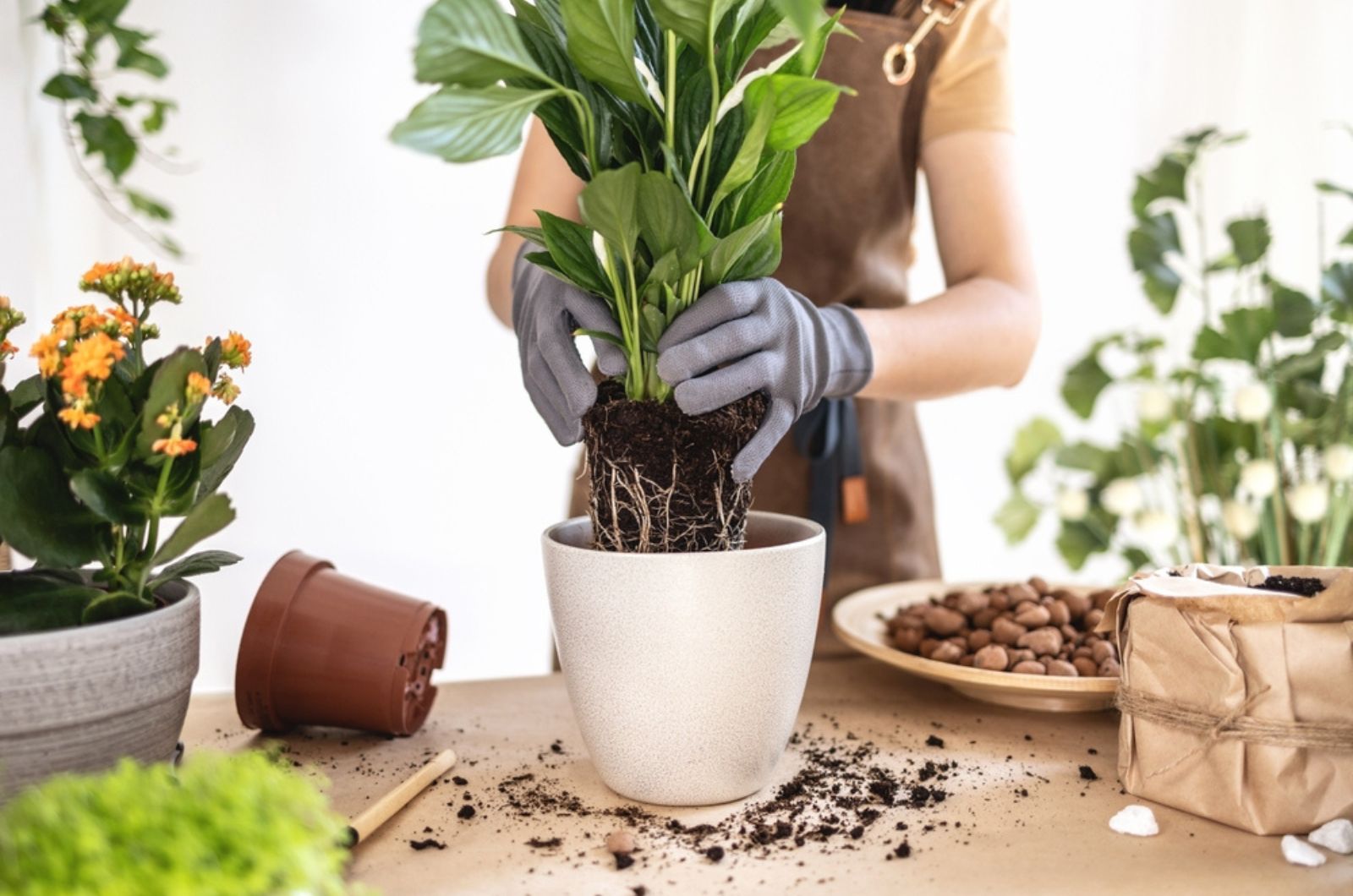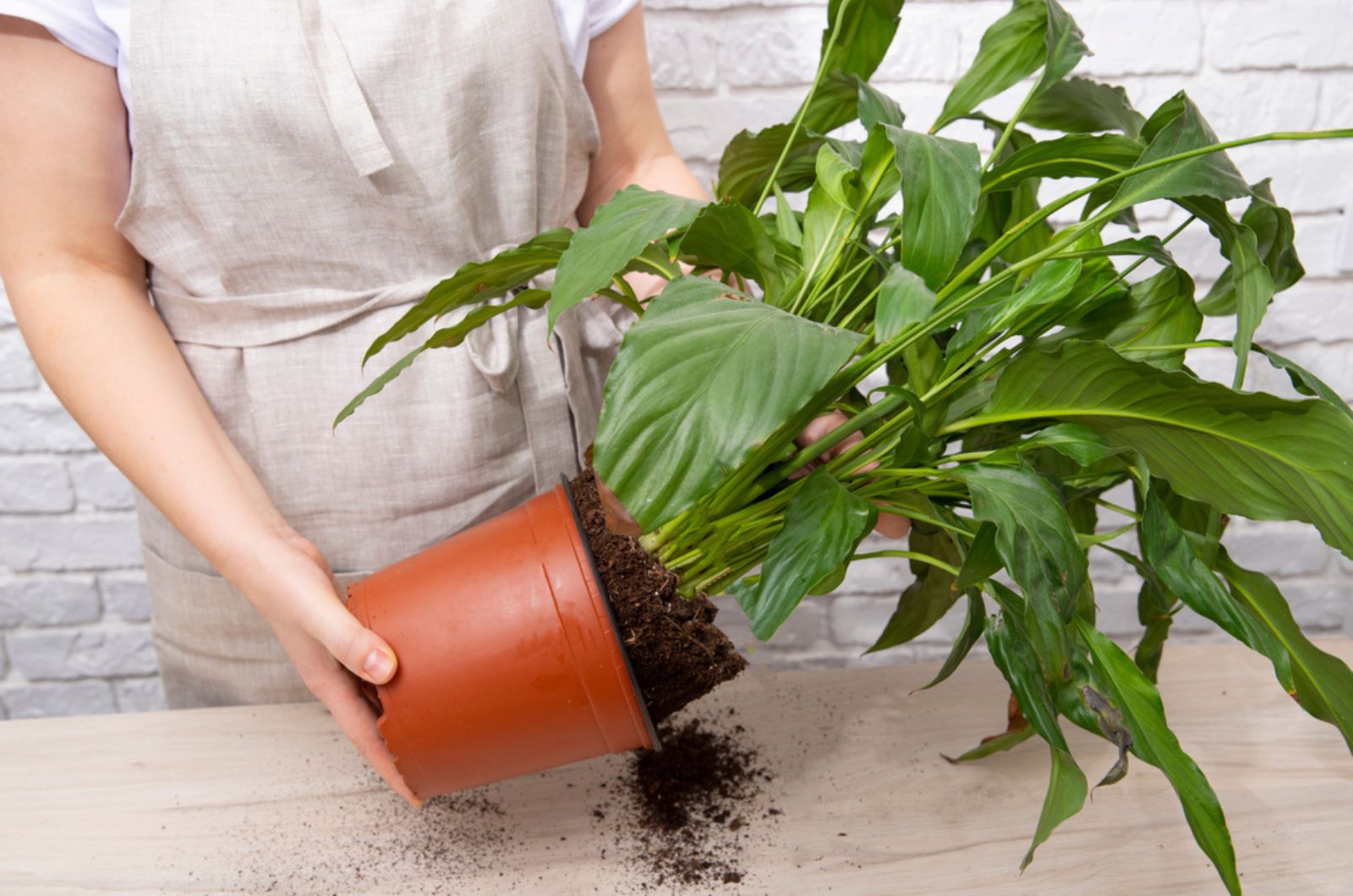Even though they aren’t true lilies, Peace lilies are one of the prettiest members of many houseplant collections. They aren’t finicky over the growing conditions and that’s the reason why many beginner growers choose them as their first plants.
One of the most important parts of Peace lily (aka Spathiphyllum) care is repotting. Although these plants don’t have a fast growth rate, they’ll benefit from repotting every two to three years.
Repotting is an opportunity to give your plant fresh nutrients and more space to spread in a new, larger pot.
If you’re worried about the difficulty of this task, I have great news: it’s simple, fast, and doesn’t require any special skill. All you need to do is follow the steps I’ll show you below!
Let’s see how to repot a Peace lily!
Does your Peace Lily Need Repotting?
As mentioned, these plants aren’t fast growers, so there’s no need to rush when it comes to repotting.
The roots are actually the ones that can tell you if the plant needs a larger pot. How come? The surefire way to tell if it’s time for repotting is the roots poking out through the drainage holes.
Other signs of a rootbound Peace lily are poor growth and soil that drains too fast.
Does this sound like your Peace lily? Here’s what to do if so.
How To Repot A Peace Lily
Let’s see the entire process.
Step #1
The first thing you need to do is prepare a new pot for your Spathiphyllum plant.
It should be approximately 2 inches larger than the current pot and it must have drainage holes in the bottom.
Step #2
Now, prepare the potting mix; a mixture of peat moss, compost, and perlite makes a perfect growing medium for peace lily plants.
You can also add slow-release fertilizer at this point to boost the nutrient levels.
Take a handful of the prepared growing medium and add it to the bottom of the new container.
Step #3
The next thing to do is take your Peace lily out of its original container. I recommend wearing gloves when handling any Peace lily plant because they can cause skin irritation. (1)
Carefully loosen the soil around the Peace lily roots using your hands. This is also a great opportunity to inspect the root system. If there are any damaged, discolored, or diseased roots, cut them off with a pair of sharp and sanitized scissors.
Step #4
Position your plant in the center of the pot and plant it at the same depth as it was originally planted.
Keep adding growing medium around the Spathiphyllum plant and pack everything well.
Step #5
Give your Spathiphyllum a good soak to help the soil settle down and the roots hydrate. Let it drain well after watering because excess water may damage the root system.
That’s it! You’ve successfully repotted this spectacular plant!
Your plant should soon recover from transplant shock and all you need to do is resume with its usual care.
Pay attention not to overwater your Peace lily because this plant has sensitive roots that could quickly rot if grown in overly wet soil.
Since these plants love humidity, you can mist the leaves to increase moisture levels. Make sure the leaves aren’t exposed to direct sunlight and temperatures aren’t lower than 55 degrees Fahrenheit.
What Is The Best Time Of The Year To Repot A Peace Lily?
One of the things you should know about Peace lilies is that they are dormant during the winter months and they ‘wake up’ when spring arrives. This is exactly when you should repot this lovely plant.
Temperatures should be warmer so that the plant can quickly recover and start displaying new growth.
In some cases, repotting can be your only solution if you’ve overwatered the plant and its roots start to rot. The leaves of your Peace lily can turn black and the plant may display other changes, such as yellowing, drooping, and wilting.
If you notice any root rot symptoms, you can repot your Spathiphyllum at any time of the year. Waiting for the spring is way too dangerous in this case.
You need to take your Peace lily out of its pot, remove the diseased roots, and apply fungicide to the remaining roots.
Always discard the old soil because it can be infected with pathogens. Also, if you’re reusing the same container, make sure to sterilize it thoroughly.
Don’t water the plant after repotting; wait until the top two inches of the soil dry out and then proceed with irrigation. This is actually the best Peace lily watering method.
Peace lilies are true treasures, and with a little care they’ll reward you with their spectacular flowers. And guess what? You can get even more Peace lily blooms if you devote more of your time to caring for this plant!
References
1. Are Peace Lilies poisonous? (n.d.). Poison Control.




